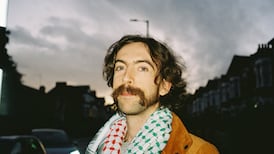Deirdre McQuillan writes that there were moments at London Fashion Week when the event felt more like a tourist trip than a preview of what we're going to wear next winter.
As the trail of catwalk shows led press and buyers to venues from Brick Lane to Park Lane, from the Mermaid Theatre in West End to the Saatchi Gallery in St John's Wood, it was a matter of different directions every day. The same could be said of the clothes. No clear picture emerged, and though there were many beautiful items and recurring themes, there was a lacklustre, uncertain air to the whole week.
Some of this could be explained by the continuing defection of high-profile names to Milan, New York and Paris, an exodus beginning to take its toll. London's status in the fashion world has always been its high educational standards and its image is one of innovation and creativity; it is seen as a breeding ground for emerging talent rather than a centre of commercialism. But when Paris attracts more than 10,000 buyers and London less than 2,000, the harsh reality is that business is done elsewhere.
Julien Macdonald, one of the few remaining recognisable names on the significantly reduced catwalk schedule, ended the week with an announcement that he intends to show in Milan next season. His glitzy presentation in the Saatchi Gallery with models pouting and prowling down the catwalk in silver fox, slipper satin, jewelled dresses, gold fringing and ostrich feather bomber jackets made its own statement about his style and his market; high octane glamour for high visibility females.
Potential clients were in the audience. The Corrs loved every minute of it, they said afterwards, as did Nicky Byrne of Westlife, though his wife, Georgina Ahern, told The Irish Times she'd go for the sparkle rather than the fur. Macdonald's parents, a middle-aged couple from Wales, beamed with pride.
Fur was another story. There was so much of it at Clements Ribeiro - racoon, lynx, fox - that security guards stood back to back in the aisles in anticipation of protest. John Rocha trimmed black trench coats with mink and threw big fur capes over sequinned skirts, as did the wonderful Alice Temperley whose show wowed everybody and had Brown Thomas buyers sitting up straight with interest. At Betty Jackson, knits came with lynx collars or rabbit fur neckties, accessories sported by a number of British fashion editors, while Boudicca made use of goat, racoon and rabbit in their "hunter gatherer" collection. Belted sheepskin gilets of various hues were visible both on and off the catwalk. One exhibitor called Romp showed a collection made entirely from rabbit and Jasper Conran fashioned winter coats from piebald pony hides. Like it or not, fur is back.
Nearly every show featured capes and capelets of one kind or another. They were big and chunky knitted affairs at Jessica Ogden, colourful lace crochet at Frost French and Jessica Ogden. Ronit Zilka put glitter into her capes and stoles while newcomer Katarina Szczotaska, made shoulder-hugging capes in grey or white Aran cable knits. Everyone had their own take on the trend; Bora Aksu's leather capelets looked as if reworked from recycled jackets, Preen's ribbed camel cashmeres were a chic alternative to a coat while John Rocha's black sequinned numbers with their high necks were a modern take on Victorian mourning dress.
Knits of all kind were a strength in London from the humorous "Monster Mouth" and loveheart prints of Antoni & Alison to Paul Smith's flag print sweaters and John Rocha's chunky black overcoats. Bora Aksu blended crochet and chiffon together, even featuring knitted boots and crochet tights. Clements Ribeiro, known for their knit wit, had images of tigers snarling across striped sweaters or even trompe l'oeil skeletons, all brilliantly executed like the stylish green and white Argyll knits at Pringle.
Tweed also made a strong showing and its current vogue seems set to continue for yet another winter. Jean Muir's delicious Ullswater tweeds featured in well-mannered coats and even dog jackets while John Rocha's Donegal tweed relieved a mostly black collection. Cocking a snook at Coco Chanel, Paul Smith accessorised navy boucle tweeds with those familiar gilt and ribbon handbag chains. Smith, like Betty Jackson and Clements Ribeiro, knows how to handle native fabrics without overstatement. Jackson's pea green coats were a perfect foil for tweed skirts and Clements Ribeiro trimmed tweed jackets with just the right amount of glitter.
My notes from the week also stress that pleats seem to be back in fashion and Jasper Conran's memorable bronze pleated skirts were a study in how to catch the limelight. His pleated leather skirts were another matter; difficult to reproduce and difficult to wear though Clements Ribeiro's multicoloured pleated tweed minis and the belted kilts of Ghost were easier on the eye and the hip. Boudicca showed pleated chiffon skirts over trousers, an ethnic touch interpreted by Frost French in streetwise fashion with mini skirts over leg warmers and by Bora Aksu with full skirts and high boots.
As for colour, there was a lot of black, a lot of navy, some tomato and as many varieties of lilac and lavender. Disturbing trends included tent coats and tiered dresses reminiscent of old-fashioned maternity wear. In the meantime, an unfamiliar presence at London Fashion Week, was the writer Marion Keyes who took copious notes in the front row of every show accompanied by the Irish-born editor of Marie Claire, Maire Ó Riordan. God knows what she was up to, but watch if she's wearing rabbit fur this winter.







